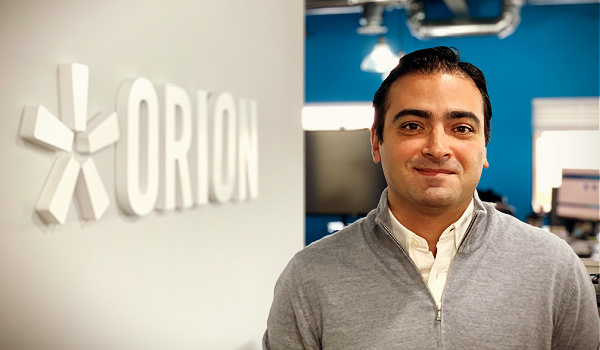Dear Reader,
This week I wanted to put a spotlight on the client side of advisor tech. Our industry develops a lot of tools to help advisors build advisor-client relationships that are efficient, personal, and scalable. At the same time, we interact with investors who have rapidly evolving expectations in what a digital experience should look like.
I spoke with Mustapha Baassiri, Orion’s Chief Product and Technology Officer, about a crucial piece of the fintech puzzle that has frankly been overlooked until this year: client portals.
Kelly Waltrich: Mustapha, thank you for making time to talk with me. Is it fair to say that the pandemic has exposed a problem with client portals in the financial services industry?
Mustapha Baassiri: Today, the main problem is that there are too many of them. Every aspect of a client’s financial life comes with its own portal. If someone wants to check their account balances, their planning goals, and investment performance… in many cases, that means logging on to three different apps.
Kelly Waltrich: This isn’t a new issue.
Mustapha Baassiri: Right. This is how client portals have been for years. The glut of portals might have frustrated advisors, but they had other ways of communicating and showing value to their clients. Advisors relied on face-to-face meetings and scheduled appointments, because that’s what worked.
Kelly Waltrich: But COVID-19 changed everything. Suddenly, we can’t have face-to-face meetings, and everyone has had months to get used to remote service.
Mustapha Baassiri: Absolutely. So the problem advisors have now is in defining their brand in a digital, remote service space. What sets you apart from their competitors? How do you win new business? And unfortunately, these fragmented client portals are now one of the biggest parts of an advisor’s client experience. It’s literally how investors interact with their advisors and their own money.
Kelly Waltrich: And if it’s a frustrating experience, clients or prospects aren’t going to stick around.
Mustapha Baassiri: Some estimates have calculated portal adoption at around 10%. If you’re an advisor trying to grow your business, that’s dismal. And it’s bad for investors, too! If it’s too frustrating to use these tools, investors are less likely to reach good financial outcomes in the long term.
Kelly Waltrich: It sounds like our industry has a good grasp on the problem. What are the obstacles to a better solution for client portals?
Mustapha Baassiri: For one, like I said, this wasn’t a priority for our industry for a long time. There were other ways of communicating your brand experience, and different investor expectations about how quickly they needed access to their financial data.
Coordination between financial institutions is another part of the problem. Every custodian, bank, planning software – you name it – all have their own user interfaces, and their own priorities. It takes a lot of effort to bring it all together into one, harmonious package.
Finally, there are regulations to consider. There are a lot of restrictions on how financial data is used and shared. But regulation often hinders innovation, even if the regulations are there for very good reasons.
Kelly Waltrich: The financial services industry can’t be the only sector facing these problems. Who else is contending with digital adoption during COVID-19? Who’s getting it right?
Mustapha Baassiri: The healthcare industry has a lot of parallels to the finance industry. We’re both under a lot of regulation, and both sectors tend to lag behind others in terms of technology. But the pandemic has created a real renaissance in the adoption of telehealth. Before this year, there were a lot of arguments against telehealth. People said it would disrupt business, infringe on patient security, and that it was inferior to face-to-face appointments when it came to health outcomes. Regulation was put into place that, for all intents and purposes, outlawed online consultation with doctors except in rare edge cases.
Kelly Waltrich: That’s certainly not the case now. Now that we’re in enrollment season, I imagine a lot of employers have insurers who are now highlighting telehealth options employees can take advantage of.
Mustapha Baassiri: The pandemic compelled the government to change regulations to make telehealth easier as a matter of necessity. And as a result, people are taking advantage of remote consultations for everything from psychiatry to dental health. In some ways, it has improved access to these services for people who might have struggled to find a nearby provider, or fit a daytime appointment into their schedules.
Kelly Waltrich: And people won’t want to turn back the clock once they’ve tasted this kind of convenience.
Mustapha Baassiri: These are behavior patterns that are going to persist well after the end of the pandemic. That’s why it’s important for advisors to demand a more coherent client portal experience from their service partners. Orion released a new client portal this year for this exact reason. As we continue building out this portal, we’ve learned two things that should encourage advisors.
One, the technology is already there. Our industry has everything it needs to make a coherent portal experience that will guide investors to better outcomes. And two, our industry recognizes this as a front-burner issue. It’s in all of our best interests to collaborate on portals that people will actually use. Advisors can expect to see more development on this front sooner rather than later.
Kelly Waltrich: Mustapha, thank you as always for your time.







